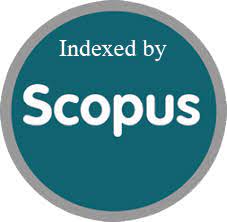Concept of Treatment of Infectious Disease in Ayurveda
Abstract
Ayurveda, though lacking a dedicated chapter on infectious diseases, identifies conditions equivalent to communicable illnesses under accounts of sankramika roga, aupasargika vyadhi, and krimi roga. These categories encompass microbial and parasitic agents and recognize transmission via contact, shared eating or sleeping, fomites, and inhalation. According to classical understanding, external pathogens initiate disease only after disrupting the body's internal doshas; thus, pathogenesis is viewed through the six-stage (ṣaṭkriyakala) model, emphasizing imbalance in doshas, dhatus, and malas. Treatment focuses on three primary strategies: purificatory expulsion therapies (such as emesis, purgation, enema, nasal cleansing or bloodletting), the use of heat and bitter quality herbs to impede pathogen proliferation by altering host terrain, and prevention by avoiding causative exposure. In sum, Ayurveda acknowledges microbial causation but prioritizes restoring internal equilibrium and strengthening the host over directly targeting pathogens, offering a host centric alternative paradigm in traditional medical theory
Downloads
References
Pd. Kasinath Shastri, Bidwan Manaranjini, Astanga Hridaya of Bagbhata Sutra Sthana, Varanasi, Chaukhambha Krishna Das Acadamy, 1st edition, 1994, p-07(chapter-1). Verse 20
Dr. Keval Krishna Thakral, Sushrut Samhita of Maharsi Sushruta, Nidana Sthana, Varanasi, Chaukhambha Orientellia, Part-1, 1st edition, reprint-2019,p-731(Chapter-5) verse 33-34
Dr. Keval Krishna Thakral, Sushrut Samhita of Maharsi Sushruta, Sutra Sthana, Varanasi, Chaukhambha Orientellia, Part-1, 1st edition, reprint-2019,p-14(Chapter-1) verse 24
Dr. Bramhanand Tripathy, Charak Chandrika of Charak Samhita, Chikitsa Sthana, Varanasi, Chaukhambha Surbharti Publication, 1st edition, reprint 2016, p-130 (chapter-3) verse 38,39
Dr. Keval Krishna Thakral, Sushrut Samhita of Maharsi Sushruta, Sutra Sthana, Varanasi, Chaukhambha Orientellia, Part-1, 1st edition, reprint-2019,p-260(Chapter-21) verse 36
Dr. Bramhanand Tripathy, Charak Chandrika of Charak Samhita, Vimana Sthana, Varanasi, Chaukhambha Surbharti Publication, 1st edition, reprint 2016, p-714 (chapter-7) verse 14
Dr. Bramhanand Tripathy, Charak Chandrika of Charak Samhita, Vimana Sthana, Varanasi, Chaukhambha Surbharti Publication, 1st edition, reprint 2016, p-714 (chapter-7) verse 14
Dr. Bramhanand Tripathy, Charak Chandrika of Charak Samhita, Vimana Sthana, Varanasi, Chaukhambha Surbharti Publication, 1st edition, reprint 2016, p-714 (chapter-7) verse 14
Dr. Bramhanand Tripathy, Charak Chandrika of Charak Samhita, Vimana Sthana, Varanasi, Chaukhambha Surbharti Publication, 1st edition, reprint 2016, p-714 (chapter-7) verse 15
Pd. Kasinath Shastri, Bidwan Manaranjini, Astanga Hridaya of Bagbhata Sutra Sthana, Varanasi, Chaukhambha Krishna Das Acadamy, 1st edition, 1994, p-181 (chapter-1). Verse 150
Dr. Bramhanand Tripathy, Charak Chandrika of Charak Samhita, Nidana Sthana, Varanasi, Chaukhambha Surbharti Publication, 1st edition, reprint 2016, p-650 (chapter-8) verse 14
Dr. Bramhanand Tripathy, Charak Chandrika of Charak Samhita, Sutra Sthana, Varanasi, Chaukhambha Surbharti Publication, 1st edition, reprint 2016, p-383 (chapter-19) verse 7
Dr. Bramhanand Tripathy, Charak Chandrika of Charak Samhita, Sutra Sthana, Varanasi, Chaukhambha Surbharti Publication, 1st edition, reprint 2016, p-388 (chapter-20) verse 7
Dr. Bramhanand Tripathy, Charak Chandrika of Charak Samhita, Sutra Sthana, Varanasi, Chaukhambha Surbharti Publication, 1st edition, reprint 2016, p-331 (chapter-16) verse 34
Downloads
Published
How to Cite
Issue
Section
License

This work is licensed under a Creative Commons Attribution 4.0 International License.
You are free to:
- Share — copy and redistribute the material in any medium or format
- Adapt — remix, transform, and build upon the material for any purpose, even commercially.
Terms:
- Attribution — You must give appropriate credit, provide a link to the license, and indicate if changes were made. You may do so in any reasonable manner, but not in any way that suggests the licensor endorses you or your use.
- No additional restrictions — You may not apply legal terms or technological measures that legally restrict others from doing anything the license permits.






